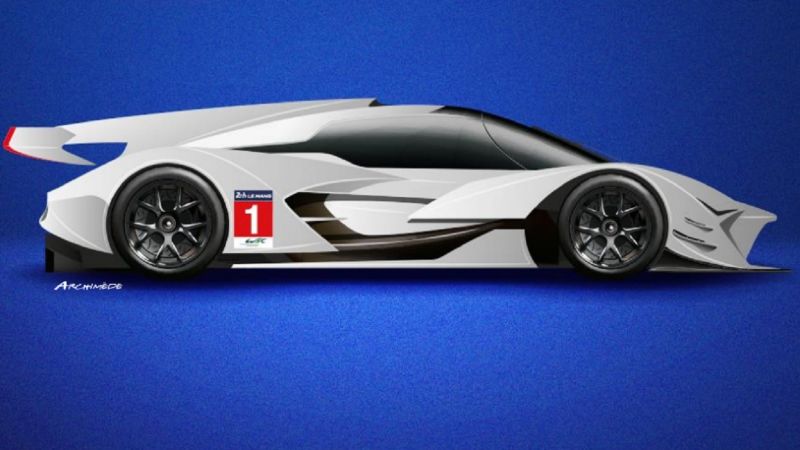
LMP1 as we know it is dead. It lived a good long life, dominated largely by Audi’s series of alphanumeric Le Mans champions. The Audi vs. Peugeot seasons were great, then the Audi vs. Toyota vs. Porsche era exploded and collapsed faster than ever thought possible.
There were certainly outside forces causing the destruction of what may have been the greatest class of international sports cars in history, but it all hinged on hundreds of millions of dollar budgets. Mix that with fickle automotive OEM boardrooms, and it’s just an explosive cocktail waiting to burst. And burst it did. Audi left, Porsche left, and Toyota is only kicking around this season to win Le Mans twice with little appreciable competition.
In an effort to return OEMs and privateers alike to top class racing, the FIA has announced a new 2020 rulebook which will allow for a number of cost-cutting exercises, as well as a wholesale change to the LMP1 class specification. Instead of alien spaceships with wheels, Le Mans Prototypes are expected to look a bit more like road-going supercars (above). All cars in the class will remain hybrid-driven, with an internal combustion engine powering the rear axle with an electric motor on the front axle.
For starters, LMP cars will now have an upper limit of power deployed much lower than the current spec. The most impressive hypercar-looking racers at Le Mans will be limited to 27 horsepower less than what you can get in a regular Hellcat. That’s right, Porsche would have to de-tune a GT2 RS engine to 680 horsepower in order to put it in a hypothetical LMP racer for 2020. On the plus side, the cars also have a front axle hybrid system, which is allowed to produce up to 268 extra horses.
Advertisement
Another way the class is saving money is to freeze these regulations for five seasons. If teams are guaranteed to have the same car for five seasons, they can amortize those development costs across that time. The car designs submitted by a manufacturer or team, for example, must not be changed more than once in that five year term. Teams will be allowed “upgrades” or “Evo” package changes five times in five years, but the base chassis and specs cannot change. Teams currently in LMP1 have been updating designs annually, so this will definitely decrease costs.
Advertisement
Each homologated entry will be aerodynamically tested by the FIA to ensure it falls within a specific set of figures for minimum drag coefficient, maximum downforce, and overall aerodynamic efficiency. Even if two teams take entirely different tacks, they’ll be regulated to achieve the same exact result. Sure, by not spending design resources and wind tunnel time on developing more efficient bodywork, the teams will save millions, but it makes all of the cars effectively stuck at the same performance level for five years.
Minimum weight is also way up, to prevent race teams and car manufacturers from going wild with lightweight technology. Cars must weigh at least 1040 kg, or about 2292 lbs. The rules even mandate that 48.5% of the car’s weight must be biased toward the front. Where is the innovation?
As if all of that couldn’t get any worse, the FIA is adding the absolute worst thing in all of motorsport to the LMP1 class for 2020: fucking success ballast. For each world championship point a team scores, they will be awarded with half a kilo in ballast, up to a maximum of 50 kilos. It works okay in touring cars, but in goddamn prototypes? Thanks, I hate it.
Advertisement
All of this adds up to a new prototype class that is slated to run about the same lap times as a current LMP1 backmarker [read ByKolles], and is heavier and less aerodynamically efficient than a current LMP2 class car. Is this a forward move?
So, are any of these changes actually good? Yes, these are.
Engines and hybrid units used in the new LMP1 class must be homologated for street use with at least 25 units of each sold in road-going cars by the end of the year the season begins. The second season, both homologation specifications increase to 100. The engines used in this new class must retain a completely stock block and cylinder head, though all other components are open to modification. The hybrid unit must remain unmodified from its street-going counterpart. So are we going to see some badass homologation specials coming out soon? It might soften the blow a bit.
Advertisement
Team sizes will also be reduced to 40 members for a two-car team. Testing will be limited to ten days per season, six of which will be limited to three two-day collective tests.
Additionally, by cost capping the hybrid systems, and allowing smaller teams to lease their hybrid systems from larger manufacturers, the playing field is a bit more level than it once was. Audi won many races by out-spending the competition. Porsche won many races by out-spending Audi. The idea is to quash that, and allow smaller teams to win again.
And finally, as shitty as success ballast is, it will not be in play for Le Mans. The new WEC season schedule will end with Le Mans as its season finale, and the season-long weight addition will be dropped for The Big One.
Advertisement
Allegedly BMW, Toyota, Aston Martin, Ferrari, and Ford were involved in the new regulations coming to fruition. Here’s hoping they fill out the grid with new hypercar-looking racers, as well as fill the roads with homologated hybrid hypercars in the near future.
For now, that’s pretty much everything you need to know about the new LMP1 regulations. It’ll be slower, but hopefully it will be much less expensive to field a competitive car, giving non-OEM-backed teams a place at Le Mans again. Forget the details, lets just get some damn cars on track, shall we?
H/T: Autosport, Racer, and Motorsport















